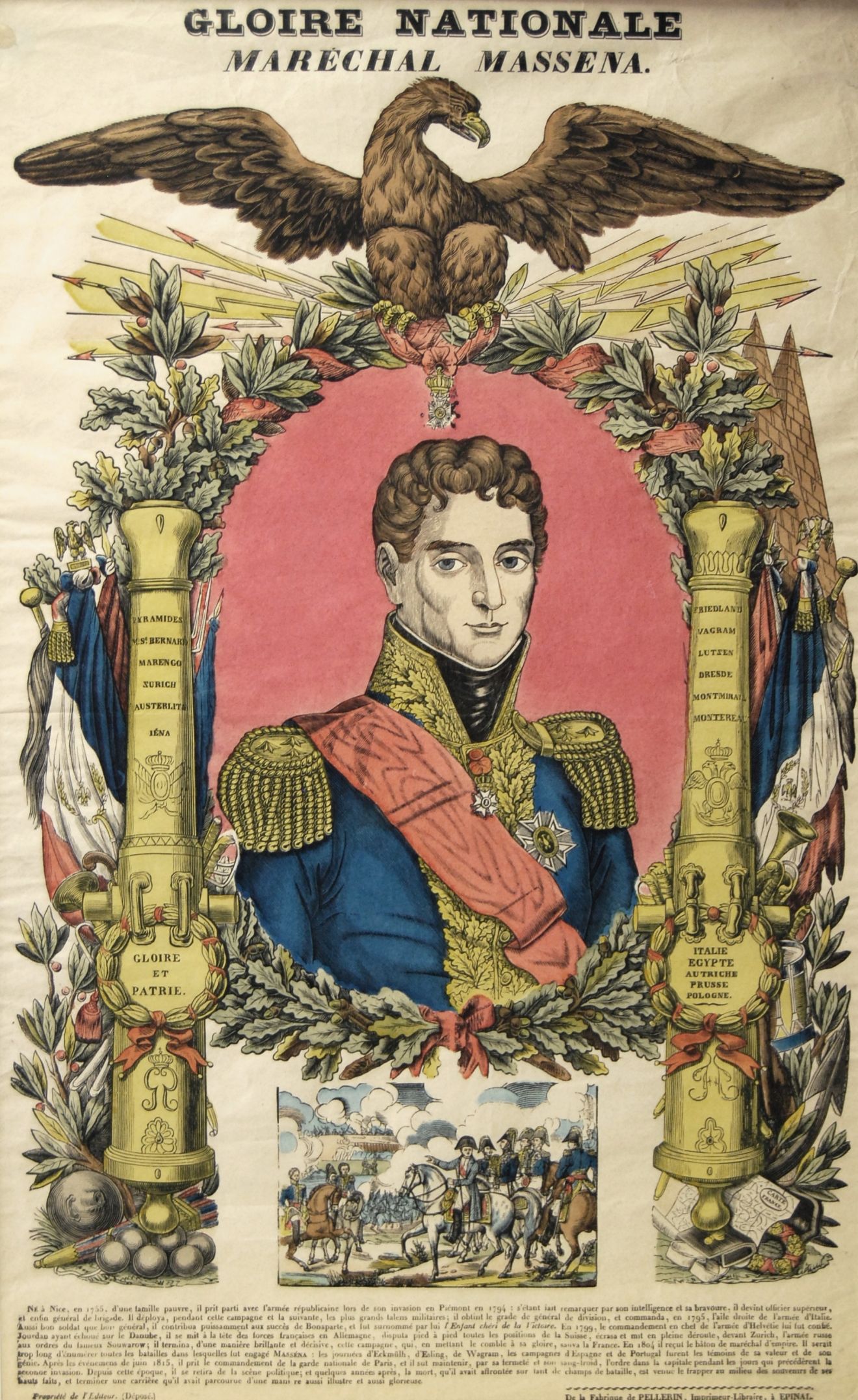Bilderbogen production and trade in the 18th and 19th centuries

Gloire nationale. Maréchal Massena, kolorierte Lithografie, Anfang 19. Jahrhundert, Druck und Verlag: Pellerin, Epinal / Frankreich
The exhibition dealt with an aspect that seems self-evident to us today: pictures in everyday life. In the 18th and 19th centuries, they were found in every household: picture sheets - large-format sheets printed with colorful pictures and short texts. Forerunners already existed in the 15th century. At a time when only a few people could read, pictures were very important as a medium for information and instruction. In every major city, printers produced individual sheets that combined a large illustration with a short explanatory text on the front. These picture sheets mainly presented spectacular and political events that people had often heard about through stories and now wanted to see with their own eyes: Wars and battles, the coronation of a ruler, a meteorite impact or an earthquake in a distant city, deformities such as a calf with several heads, or exotic animals like an elephant or a lion. In addition, religious motifs and bows for children dominated the range. Technical innovations, especially the invention of lithography, made prints increasingly affordable in the course of the 19th century. The colorful sheets became a take-away item for everyone.
Some publishers managed to position themselves beyond the local market and achieve very high production figures. One of the best-known German publishers, for example, was Gustav Kühn's Lithographische Anstalt in Neuruppin near Berlin. A few figures illustrate the productivity of this publishing house: Gustav Kühn published more than 20,000 different picture sheets, some of which appeared in editions of 40,000 to 80,000; in 1832, 1.2 million sheets were printed, and during the Franco-Prussian War, Gustav Kühn was able to sell three million picture sheets on this subject alone.
The characteristic of the picture sheets from Neuruppin was their great topicality and relevance to the times. For many people, the broadsheets were the most important source of information. And so Theodor Fontane expressed himself impressed in 1862 in his book "Wanderungen durch die Mark Brandenburg": "Long before the first 'Illustrated Newspaper' went into the world, the Kühnsche Bilderbogen illustrated the daily story, and what was the main thing, this illustration did not lag slowly behind, but followed the events on the heels."
In the 19th century, printed sheets became the first cross-border mass medium in Europe: there were countless publishers in Spain, Italy, France, Germany, Russia and in the Netherlands, which also imported their products to other countries. Often, the titles or texts of the illustrated sheets were already printed in several languages and could thus be easily sold in different countries. The publishing house Friedrich Wentzel from Weißenburg in Alsace delivered its products to France, Germany, the Netherlands, Belgium, Austria and Poland. Picture sheets from Neuruppin reached as far as Russia, and the Frankfurt company May Söhne produced special prints that were sold to India.
Through catalogs, street vendors, or newspaper ads, the pictures found customers throughout Europe. Some places in areas with few opportunities to earn money specialized in sales. In the 19th century, for example, the "Italian picture dealers" from the Ticino Valley in South Tyrol were known throughout Europe. The itinerant traders went from place to place on foot with a wooden box on their backs containing inexpensive picture sheets, but also high-quality copperplate engravings from the Remondini printing house in Bessano, and sold their wares wherever they found interested customers: At markets, in inns, or directly in people's homes. The travel routes took the merchants from Italy to Russia and Scandinavia.
The individual publishers developed a very specific profile through their respective themes, their printmakers and their coloring, so that often a single glance is enough to be able to assign a sheet. In this special exhibition, the most important German and European publishers were presented with their respective profiles and distribution channels.